THE AFTERMATH
Gauteng police’s poor response to looting blamed on inadequate resources and low numbers
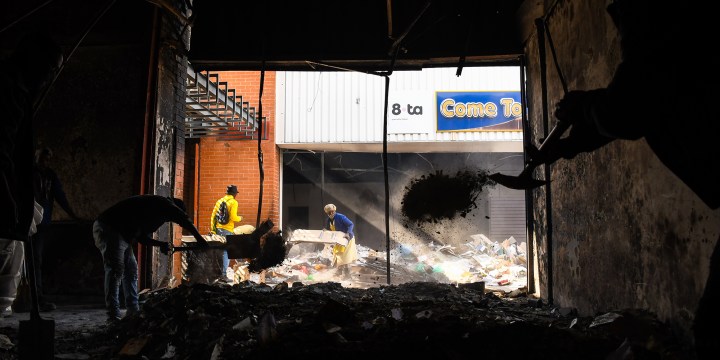
They weren’t prepared, but Gauteng police were certainly aware of what was approaching them.
In Sebokeng on Thursday, the Gauteng Provincial Legislature’s Portfolio Committee on Community Safety invited law enforcement to account for their role in responding to the recent looting, violence and destruction of property that escalated from Kwa-Zulu Natal to Gauteng.
The committee said, “The portfolio committee has noted with regret the dithering and slow response by police which made it possible for the unrest to prolong, causing more damage to the economy and job losses; this at a time when the country is on a path to recover from the harrowing effects of Covid-19.”
Mazibuko says Gauteng was ready for the unrest
What was made clear is that the South African Police Service (SAPS) didn’t have the numbers or the resources to deal with the unrest.
They weren’t prepared, but Gauteng police were certainly aware of what was approaching them.
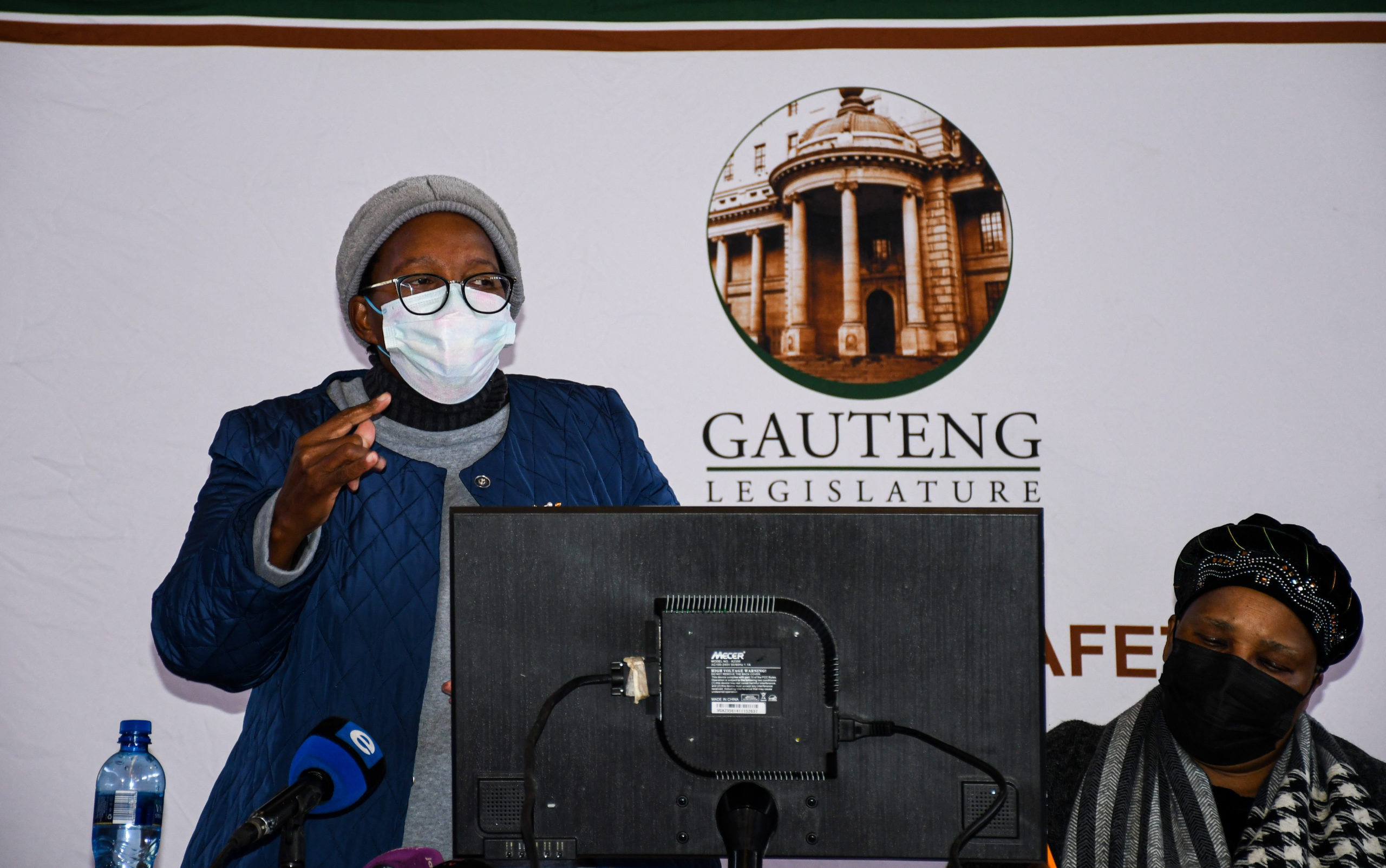
Gauteng Community Safety MEC Faith Mazibuko (left) addressing Provincial Legislature’s Portfolio Committee on Community Safety in Sebokeng on Thursday. (Photo: Julia Evans)
Gauteng Community Safety MEC Faith Mazibuko told the committee: “As Gauteng, I must indicate, Chairperson, we were ready.”
Mazibuko said they received intelligence in the form of audio clips, videos and posters from community members alerting them that what was happening in KZN was moving along the N3 toward Gauteng.
“Friday night we [the public] slept whilst everyone was gathering this information and crime intelligence [was] working flat-out in further detecting where else are these messages coming from and who else is sending these messages,” said Mazibuko.
“When we first picked up that there are these things being planned and targeted now coming to Gauteng, police were able to convene urgently through the crime intelligence and through the state security agencies.”
Brigadier David Bender, Gauteng provincial head of organisational development, confirmed that an operational planning meeting with law enforcement agencies was held on Sunday, 11 July to address the threat of loss of life, looting of businesses, damage to property and blocking of routes. From there a joint integrated operational plan was compiled and implemented.
On Monday, 12 July, a provincial joint operational committee was established to ensure effective coordination, command and
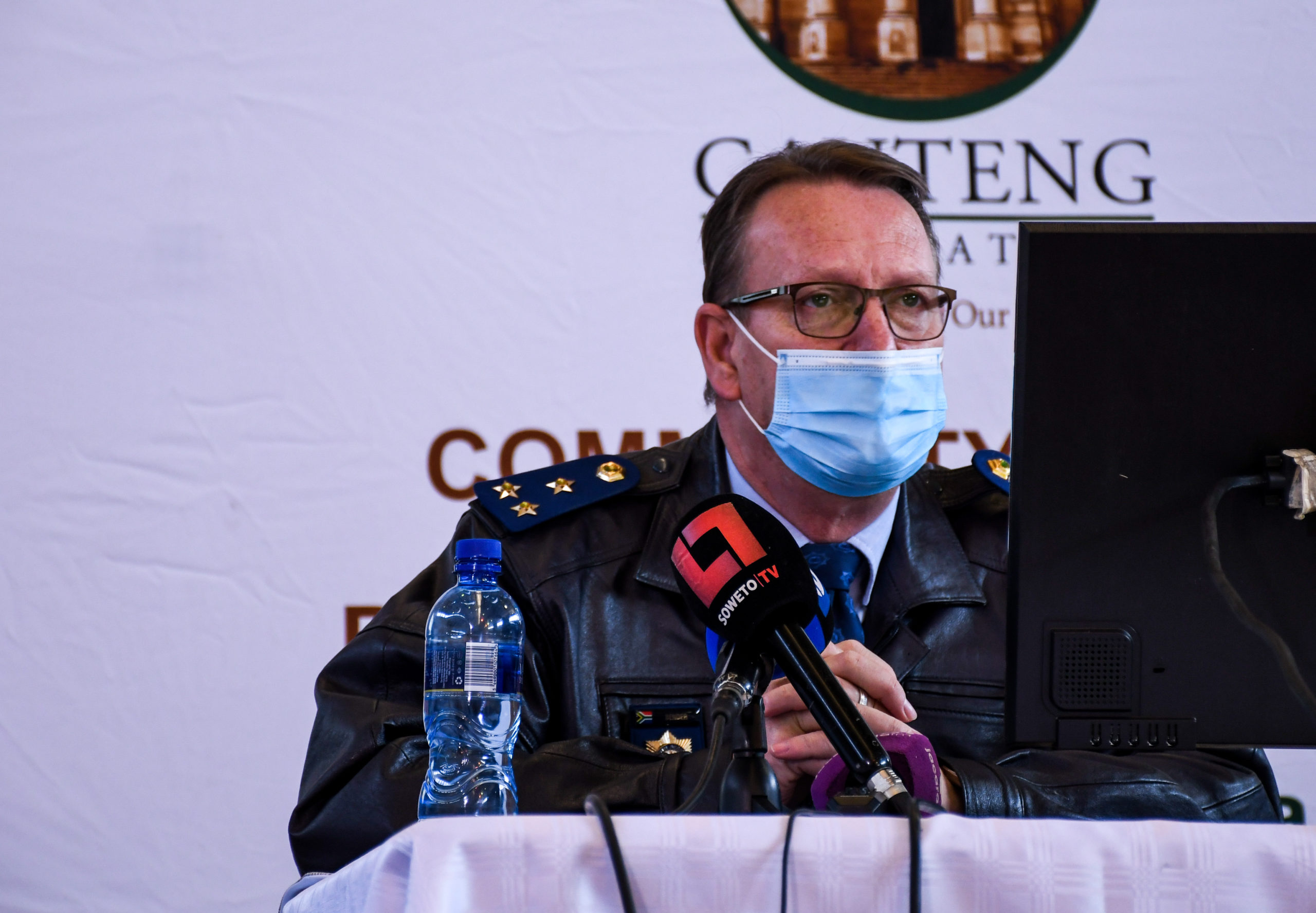
Brigadier David Bender, Gauteng Provincial Head of Organisational Development presents safety measures employed by Law Enforcement Agencies during recent civil unrest and future response to mitigate similar incidents in future. (Photo: Julia Evans)
.Bender said that 2,926 SAPS officers were deployed in Gauteng and that in total there were 4,747 officers after the South African National Defence Force (499) and metro and traffic police (1,322) were asked to assist.
“And as a result, police had to quickly put together systems and put together resources,” said Mazibuko, adding that 300 police officers from Gauteng had been sent to KZN to assist with the unrest there.
Bender explained that over the following two weeks, the following actions were implemented:
- Collapsing of the standard system of four relief shifts into a two-shift system to increase the number of personnel for operational duties.
- Deployment through high visibility of integrated law enforcement patrols at shopping malls, schools, critical infrastructure and identified National Key Points.
Bender said, “For the majority, the current situation has returned to relative calmness, with all main routes open and clear. Clean-up operations are in process at affected malls and sites.”
“As Gauteng we were not caught napping,” said Mazibuko, “and so people, what is good is that we’ve got a community in Gauteng that also shares information. Even members of the opposition were also sharing that information… telling us what is being planned.
“And then we’ll elevate it to crime intelligence, elevate it to state security… and then decentralise the information to the district commissioners to make them aware. So that way… they are able to tackle some of those challenges.”
Why some police didn’t act
Mazibuko made it clear that the police weren’t unresponsive, but often the Joburg Metro Police Department (JMPD) were the first responders and couldn’t react because they only had live ammunition and didn’t have resources to address crowd control.
With other police officers addressing hotspots around the country, the SAPS had to activate other resources like the JMPD to help in the escalating unrest around the province.
Mazibuko said that the police also engaged with CPS and Business Against Crime, asking them to monitor situations where they’d been informed there was unrest.
“This is almost 4am. We are sitting in Thokoza, together with the two top leadership of SAPS now checking on the resources that are available for the police now that it is becoming eminent that we have to deal with crowd control.
“I must congratulate them, Chair,” said Mazibuko, addressing Alphina Ndlovana, chairperson of the committee, “as much as they were thin on the ground – we did not have enough officers – they were running wherever they’re able to run.”
Not only weren’t there enough police officers, but not all officers are equipped to deal with crowd control.
“Not any police officer can go deal with crowd control; there are those that have been trained specifically,” explained Mazibuko.
“And remember police carry live ammunition. They can’t go into Sebokeng Plaza and take out their guns and start shooting. It means they also have to await these ones who deal with crowd control because of the type of resources they are carrying. Like your stun grenades. They are carrying tear gas, and they are also carrying rubber bullets. So they are the ones that deal with crowd control. So the ordinary station police only carry 9mm guns and you can’t use that because it is live ammunition that can actually injure or hurt people.”
How the SAPS plans to respond in future
From the lessons learnt during their response to and evaluation of the unrest, the SAPS developed a five-pillar approach for similar incidents and threats in the future:
- Intelligence gathering, analysis and coordination, such as collapsing of Crime Intelligence personnel into two shifts to address the threat.
- Proactive approach: high visibility, which includes updating mobilisation orders to facilitate immediate call-up of available resources and conducting high-visibility patrols at identified crime hotspots.
- Combat approach: rapid response and hard-core policing, such as ensuring a speedy response to all emerging threats and combating the threat.
- Reactive approach: detection, tracking and case management, which includes collapsing investigation teams focusing on the threat into two shifts to ensure 24-hour follow-up and investigation; effective case management of all cases registered; docket analysis; linking of suspects; opposing of bail; and ensuring that organised crime threats analyses are registered with assistance from Crime Intelligence.
- Communication and liaison, including media releases on successes achieved in addressing the threat, joint public relations and marketing with stakeholders, media releases in response to misinformation and all viral videos circulating, gaining public confidence by explaining the response plan to the community and immediate response to statements intended to tarnish the police.
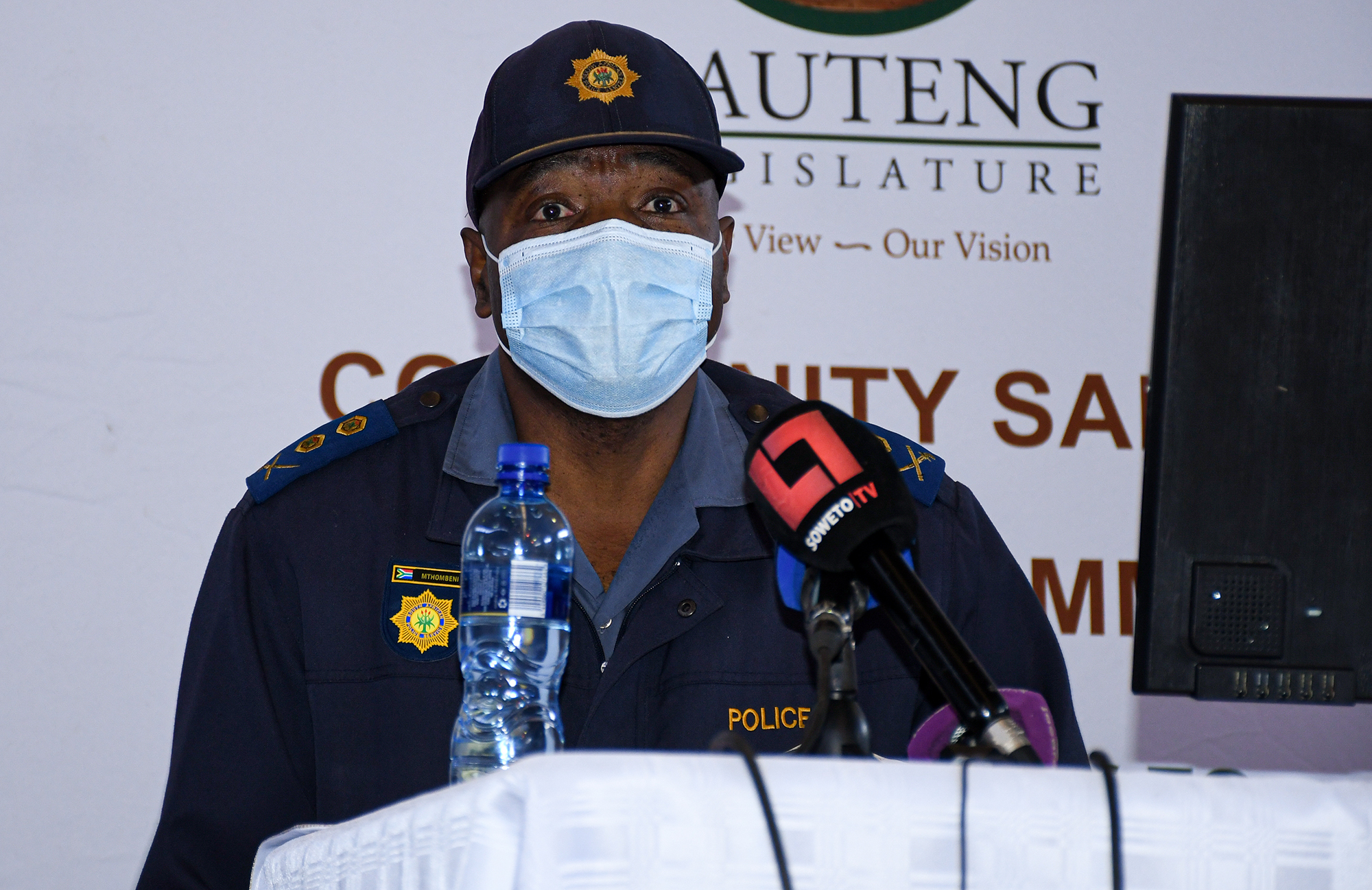
Acting Provincial Commissioner for Gauteng police, Major-General Thommy Mthombeni said SAPS was happy to collaborate with the private security industry to ensure a safe environment for communities. (Photo: Julia Evans)
With this five-pillar approach, the acting provincial commissioner for Gauteng, Major-General Tommy Mthombeni feels they are better equipped to deal with this sort of situation in the future.
However, committee member Michael Shackleton (DA) voiced the fears of many South Africans when he said, “People are scared as to whether the violent unrest and all the looting could spring up again, and even become something worse.
“I think that this situation now, where people are scared that violent unrest is going to spring up again, and people are saying that it’s the worst violence since our democracy began in 1994, I think this presents a perfect opportunity to increase police resources.”
Mazibuko said there was a lack of recruitment due to police colleges being closed because of Covid-19 and officers retiring at 60 and not being replaced quickly enough.
Shackleton emphasised the huge resource in private security
“We have 498,000 members of security companies in this country. And we have about 160,000 active SAPS offices in the whole country. And there’s a clause in the Criminal Procedure Act where an officer can command a person to assist in an arrest. [The police] don’t have enough resources, but they have the means to use CPS, to use civilians that own firearms privately, as an auxiliary force for free.”
Another committee member, Kobus Hoffman (Freedom Front Plus) agreed that we should utilise private security. However, Sizakele Nkosi-Malobane (ANC) was against this, saying it promotes vigilantism and gangsterism. DM





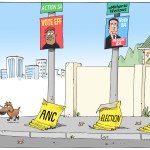












 Become an Insider
Become an Insider
‘Not all officers are equipped to deal with crowd control.’ So you leave the task to citizens. ‘Collapse the four shift system into two sift systems to get more officers.’ Why having shifts at all during an emergency? By implication a SAPS member must go to bed in the middle of a task of crowd control. ‘We were aware of what is approaching us.’ Really? The poor response does not reflect this.
Etc. No space to continue. Incompetency is a more accurate description.
Take away the lethal pistols that officers carry – a pistol with one cartridge of live ammo rounds is not much use as there are very few situations in riot/crowd control that they could legally be used – besides which they are desired by criminals – and give each police officer doing crowd control a paintball gun with 400 rounds of 50-50 mixed bright paint and pepper balls. Then you have marked the culprits and they wont like the pepper. Think innovative. Where is the dannert / concertina razor wire to block off roads and access – simple but effective ?